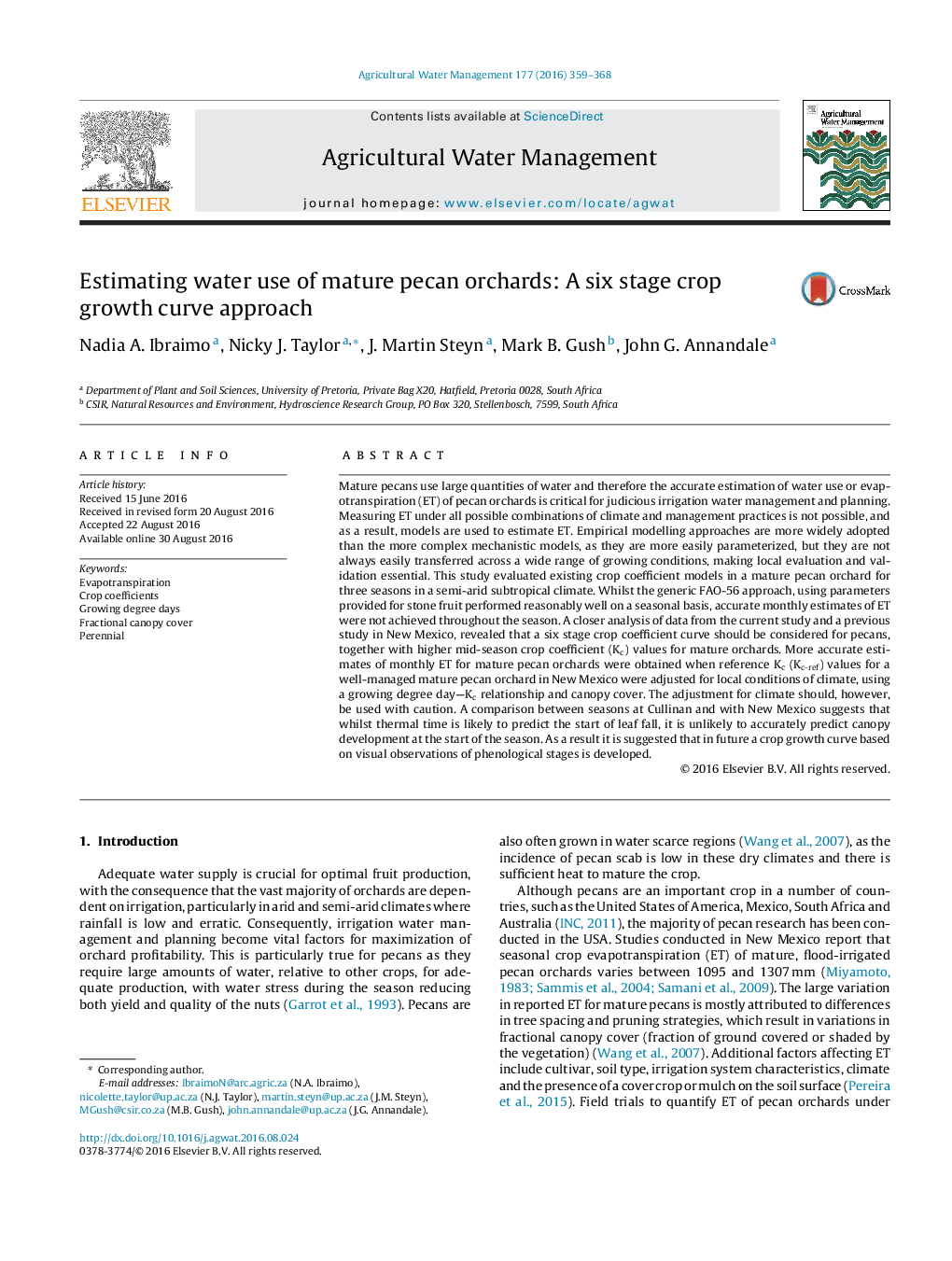| Article ID | Journal | Published Year | Pages | File Type |
|---|---|---|---|---|
| 6363438 | Agricultural Water Management | 2016 | 10 Pages |
â¢Pecans should not be grouped under stone fruit in FAO-56.â¢A six stage crop growth curve should be applied to pecan trees.â¢Pecan reference Kc values should be adjusted for climate and canopy cover.â¢Thermal time is not the sole determinant of canopy development.â¢Visual observations of crop growth stages are recommended.
Mature pecans use large quantities of water and therefore the accurate estimation of water use or evapotranspiration (ET) of pecan orchards is critical for judicious irrigation water management and planning. Measuring ET under all possible combinations of climate and management practices is not possible, and as a result, models are used to estimate ET. Empirical modelling approaches are more widely adopted than the more complex mechanistic models, as they are more easily parameterized, but they are not always easily transferred across a wide range of growing conditions, making local evaluation and validation essential. This study evaluated existing crop coefficient models in a mature pecan orchard for three seasons in a semi-arid subtropical climate. Whilst the generic FAO-56 approach, using parameters provided for stone fruit performed reasonably well on a seasonal basis, accurate monthly estimates of ET were not achieved throughout the season. A closer analysis of data from the current study and a previous study in New Mexico, revealed that a six stage crop coefficient curve should be considered for pecans, together with higher mid-season crop coefficient (Kc) values for mature orchards. More accurate estimates of monthly ET for mature pecan orchards were obtained when reference Kc (Kc-ref) values for a well-managed mature pecan orchard in New Mexico were adjusted for local conditions of climate, using a growing degree day-Kc relationship and canopy cover. The adjustment for climate should, however, be used with caution. A comparison between seasons at Cullinan and with New Mexico suggests that whilst thermal time is likely to predict the start of leaf fall, it is unlikely to accurately predict canopy development at the start of the season. As a result it is suggested that in future a crop growth curve based on visual observations of phenological stages is developed.
